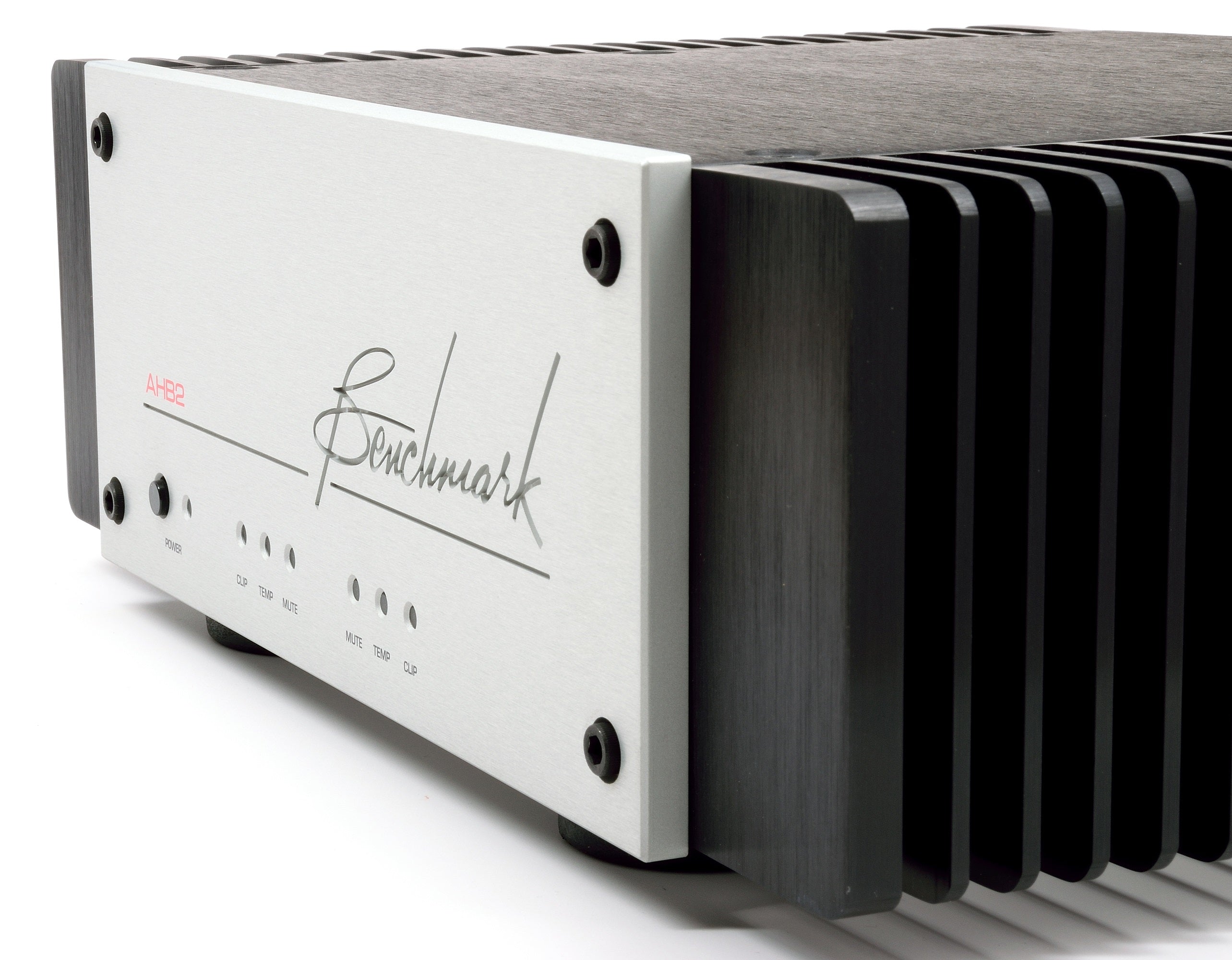Free shipping on USA orders over $700. Low-cost shipping to Canada.
AHB2 Review - Paul Rigby, The Audiophile Man
by Benchmark Media Systems June 01, 2016

AHB2 - "The Perfect Heart to any Hi-Fi"
"Starting with Dakota Staton’s album ‘Round Midnight from the original Capitol release, issued in 1960, I connected the Benchmark to my Quad 57 electrostatics."
"Staton’s vocal delivery was calm, even and smooth without any edginess to her delivery and certainly without any brightness or blooming during crescendos. Her even-handed vocal delivery was very pleasant indeed."
"As for the instruments backing Staton, I was impressed by the tonal accuracy of the introductory strings and the clarinet. Both, backed by the similarly impressive low noise nature of the soundstage, had room to express themselves that enhanced the richness of their performance."
"Everything was in order and everything was in its place. Part of the reason for this was the low noise so, right from the off, the music was much more focused than many other components."
"Bass was never one dimensional but had a layered personality of its own."

"Neat in construction, busy in terms of features and small in stature, the AHB2 is quite remarkable in how it goes about its business of delivering music. I’ve seldom heard such a balanced, easy on the ear power amplifier as this that also provides tonal accuracy plus an attractive space in the midrange. The AHB2 would be an ideal fulcrum to any hi-fi system, acting as the heart around which you can build up your hifi chain. It’s dependable and rock solid. The perfect heart to any hifi."

- Paul Rigby, The Audiophile Man - audiophileman.com
Caution:
In his review, Paul Rigby mentions driving Quad ESL-57 electrostatic speakers using the AHB2 in bridged-mono mode. Potentially, this mode will provide too much output to the ESL-57 speaker and this may cause damage. The ESL-57s are rated for a maximum input voltage of 33V. The AHB2 can deliver 40V in stereo mode and 80V in mono mode. Mono mode can severely overdrive the ESL-57 speakers and may cause permanent damage to the electrostatic panels. The AHB2 should be used in stereo mode when driving ESL-57 speakers. Apparently the AHB2 gain switch was configured for a lower gain than Paul's other amplifier. This led him to believe that the AHB2 needed to run in bridged-mono mode when driving his ESL-57 speakers. The correct action would have been to turn up the preamplifier and/or adjust the gain switch on the back of the AHB2.
- Benchmark
Also in Reviews
HPA4 Review - AP Mastering
by Benchmark Media Systems September 26, 2025
"This is the best headphone amplifier that I have ever tested. In every conceivable metric, absolutely perfect."
"If you've got the money and you want something that is an engineering masterpiece, this is such a thing."
- AP Mastering

Benchmark System Review - Ricky Dasler, Living Sound, New Zealand
by Benchmark Media Systems July 22, 2025
"With over 40 years as an audiophile and more than half those years as a hi-fi retailer, I feel I’ve finally put together a stereo that ticks all my sonic boxes. Those being in order of priority, dynamics, scale, tonal accuracy, fatigue free resolution and soundstage."
"For the last 25 years I’ve been fortunate to have a dedicated listening room. I use acoustic treatments from Real Traps, Vicoustic and Primeacoustic."
"My Benchmark components consist of the DAC3 B (connected to a Naim NDS streamer), LA4 line amplifier and two AHB2 power amplifiers run in bridged mono mode. All cables are Benchmark too."
"The Benchmark gear in my system has brought what I have wanted in my list of sonic priorities as listed above and then some. They have delivered way beyond what I thought could be possible in my system in my room."
"I’m delighted and stunned daily as my vast music collection comes to life on a whole new level."
- Ricky Dasler, Living Sound, Nelson New Zealand.

Benchmark Converters at Abbey Road - Geoff Pesche
by Benchmark Media Systems June 02, 2025
"What are the Latest Advancements in Mastering?"
"Geoff Pesche weighs in on how the mastering team at Abbey Road Studios achieve first-class results." - Mix with the Masters
"The biggest sonic improvement in mastering in the last 5 or 6 years is D/A and A/D converters and that's very very important - what you have at the front and the back of the chain."
"We use fairly new Benchmark converters front and back."
"Abbey Road like a uniformity between the rooms so all of the rooms have the same A/D and D/A conversion."
- Geoff Pesche, Mastering Engineer, Abbey Road Studios



